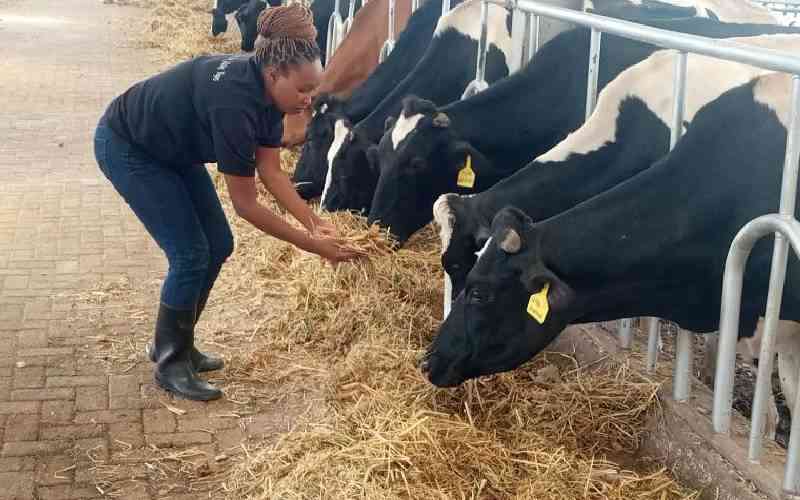Of all the farms I have visited in the course of my veterinary duties I have noticed that you will always be welcomed by a barking dog at the gate. Later, when you are done with your work and the farmer offers you a cup of tea or a table to write your report, the cat welcomes you with a meow and a gentle rubbing against your feet.
These pets do get sick but not all their sickness are transmissible to man; just the same way we get sick but don’t necessarily spread all our diseases to pets despite close co-existence. Nonetheless; caution should be taken when dealing with sick pets, regular deworming and vaccination against deadly diseases like rabies in dogs must be handled as a priority. That is the reason today I chose to write about some diseases that farmers can pick from their pets.
Rabies
This is a deadly viral disease that affects man and all other warm blooded animals. It affects the nervous system and causes sudden change in behaviour, paralysis, coma and subsequent death. The disease is spread through infected dog bites. Though preventable, rabies still kills over 50,000 people throughout the word; especially in developing countries.
Stray and unvaccinated dogs are the main source of rabies; although it can also be spread to man by rabid wolves, foxes, raccoons and cats. Rabid dogs and cats will either be depressed and will bite when provoked or they will become restless, bite strange objects including people. Rabies can also be spread to cattle through dog bites. A rabid cow will stop producing milk, produce excess saliva, have increased sexual activity, attack other animals, become paralysed and eventually die. Because 95 per cent of rabies cases are spread by bites of infected dogs; vaccination and stray dog population control is the main prevention and eradication strategy.
When bitten by a suspected rabid dog or cat; treat this as an emergency. Thoroughly wash the bite wound with a lot of water and soap (a disinfectant is better) and immediately seek medical attention. When travelling to high risk areas seek pre-exposure vaccinations and post-exposure vaccination when bitten to stimulate the human body to produce antibodies against the virus.
Hydatid Disease
This is a scary and fatal disease caused by the intermediate stages of the dog tapeworm. Man is a dead end host for the worm when eaten accidentally through food contaminated with dog feaces or directly through contact or other cultural practices in some communities where dog feaces are used in some ceremonies. Pet owners can also pick this worms through kissing their dogs or allowing dogs to lick their faces. In humans, the worm forms big cysts in the liver, lungs or worse still in the brain with deadly consequences. Dogs easily pick intermediate forms of the worms from eating raw offal from cattle, sheep or pigs or wild animals.
Clinical signs in man will depend on the size and location of the cyst within the body. The disease can cause serious illness that can only be treated through surgical removal of the cysts.
Prevention and control of this disease is through breaking the dog tapeworm cycle by regularly deworming your dogs using Praziquantel group of dewormers, don’t feed dogs on raw carcasses or offals. Wash your hands after handling dogs and before eating and don’t allow dogs to defecate near vegetable gardens or where children play; in summary avoid contact with dog feaces.
Worms
People get infected with roundworms when they eat infective eggs from contaminated soils, hands and objects. The eggs normally are sticky therefore they easily stick onto fingers and even under long nails. Hookworm infection occurs through larvae penetration through the skin or ingestion of eggs. These eggs will accumulate in their thousands in soils where cats and dogs defecate contaminating the environment from where man can easily pick them.
Cat scratch Fever
This is a cat bacterial disease transmissible to man. It affects 9 out of every 100,000 people annually; it is common in homes with cats and in people below 20 years due their obsession with cat pets. In human beings it follows a scratch or bite from an animal but cats are most common causes. A carrier cat can also introduce the bacterial through licking of human wounds. The disease is characterised by swelling of lymph nodes and a fever.
-The writer is a veterinary surgeon and works with the Kenya Tsetse and Trypanosomiasis Eradication Council (KENTTEC)
Stay informed. Subscribe to our newsletter
 The Standard Group Plc is a
multi-media organization with investments in media platforms spanning newspaper
print operations, television, radio broadcasting, digital and online services. The
Standard Group is recognized as a leading multi-media house in Kenya with a key
influence in matters of national and international interest.
The Standard Group Plc is a
multi-media organization with investments in media platforms spanning newspaper
print operations, television, radio broadcasting, digital and online services. The
Standard Group is recognized as a leading multi-media house in Kenya with a key
influence in matters of national and international interest.
 The Standard Group Plc is a
multi-media organization with investments in media platforms spanning newspaper
print operations, television, radio broadcasting, digital and online services. The
Standard Group is recognized as a leading multi-media house in Kenya with a key
influence in matters of national and international interest.
The Standard Group Plc is a
multi-media organization with investments in media platforms spanning newspaper
print operations, television, radio broadcasting, digital and online services. The
Standard Group is recognized as a leading multi-media house in Kenya with a key
influence in matters of national and international interest.









